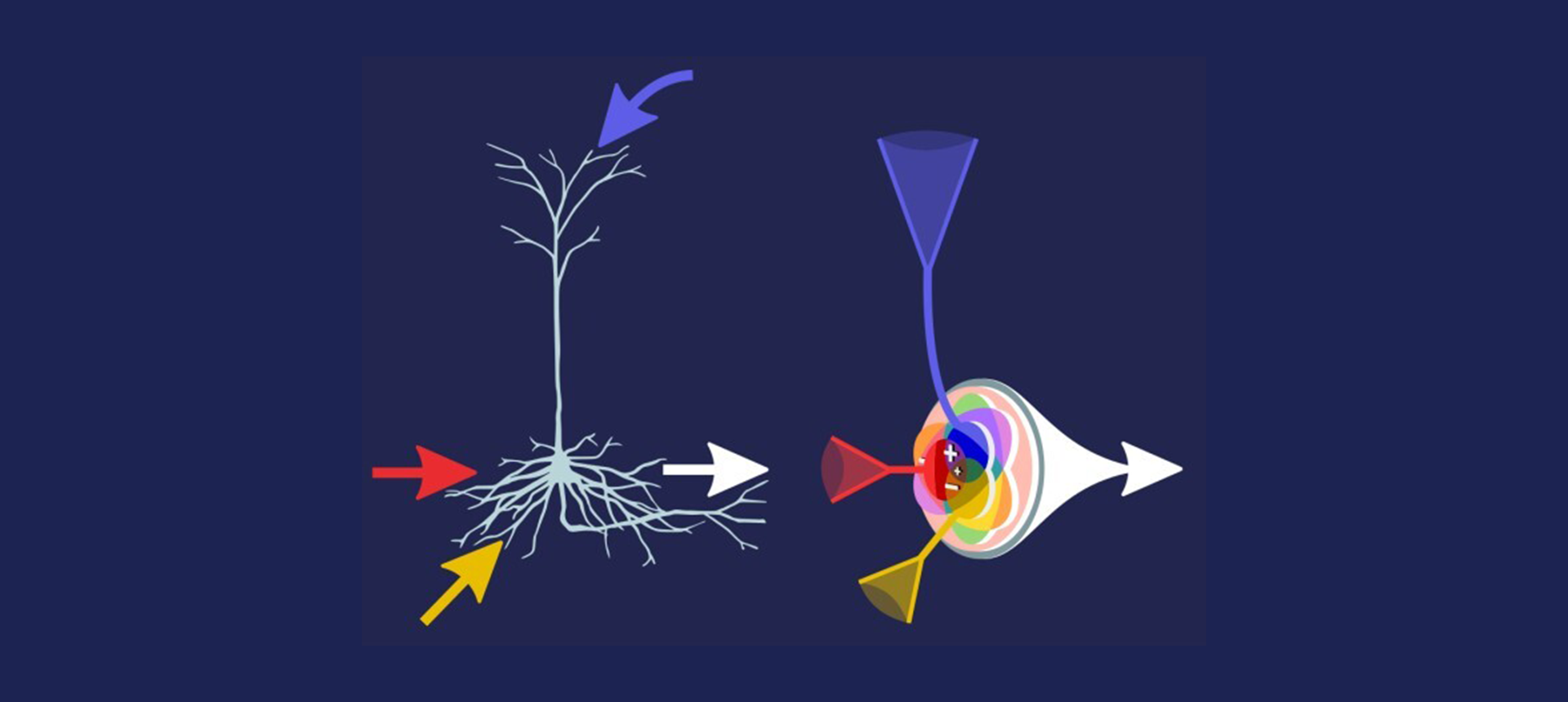Göttingen research team constructs network of self-learning infomorphic neurons
Novel artificial neurons learn independently and are more strongly modeled on their biological counterparts. A team of researchers from the Göttingen Campus Institute for Dynamics of Biological Networks (CIDBN) at the University of Göttingen and the Max Planck Institute for Dynamics and Self-Organization (MPI-DS), including MBExC member Viola Priesemann, has programmed these infomorphic neurons and constructed artificial neural networks from them. The special feature is that the individual artificial neurons learn in a self-organized way and draw the necessary information from their immediate environment in the network. The results were published in PNAS.

Living neurons receive signals from different sources, process them and pass an output signal on to other neurons (left). In the artificial neuron model, this information processing can be described and improved by a learning objective (right). Similar to their biological models, this independent learning allows novel artificial neurons to solve tasks in a self-organized way. Photo: Andreas Schneider

